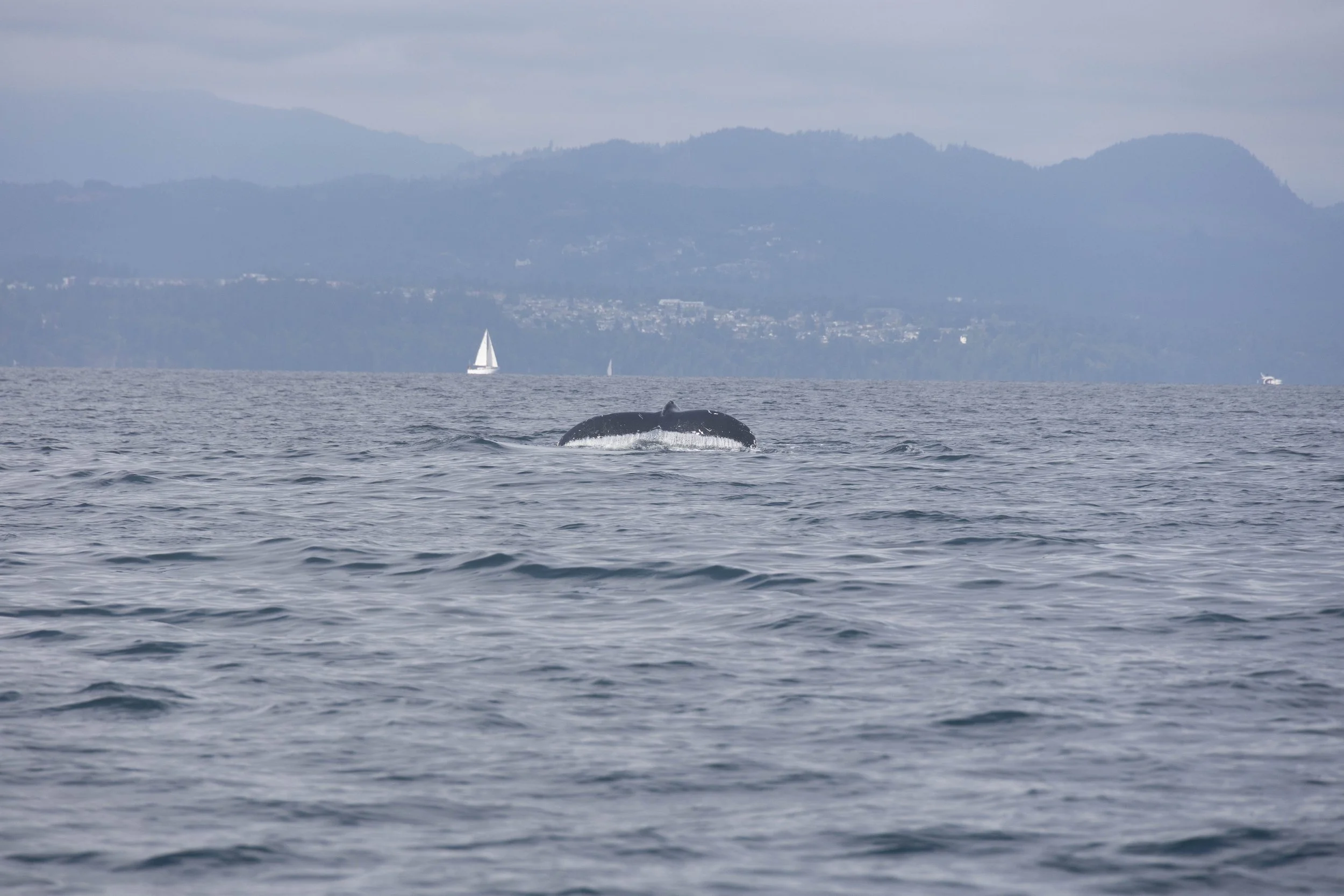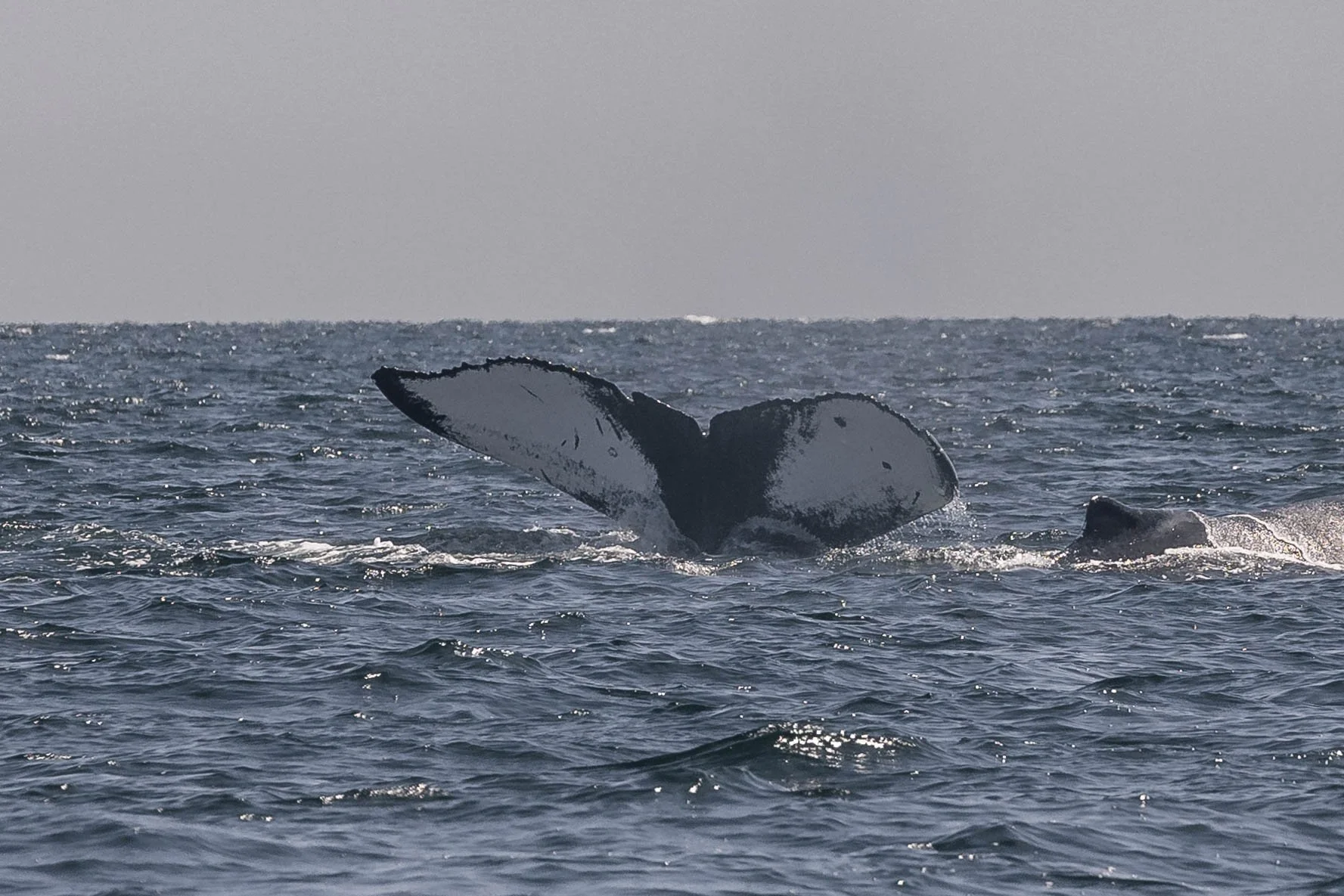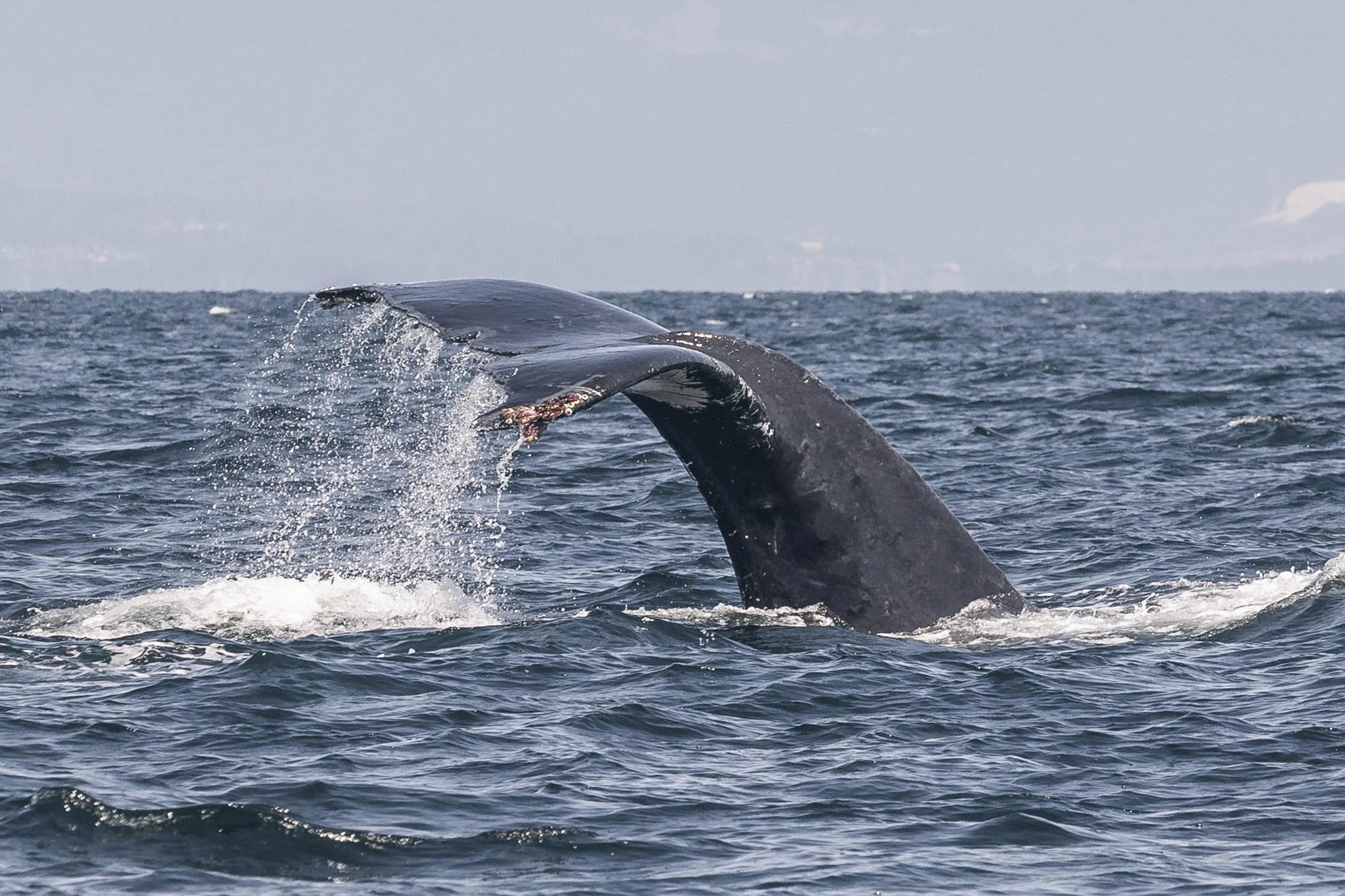July 26, 2025, 10:30 AM - A ganglion of humpbacks!
The excitement was palpable as guests boarded their vessels, hoping to catch a glimpse of some of the giants of the Salish Sea! Every day and every trip is a new adventure, and we never know what the day will have in store for us. Our vessels made their way out of the Nanaimo harbour. They headed to the Georgia Strait, a body of water that had been extremely kind to us this year, as our humpbacks have returned to their summer feeding grounds in larger numbers than we’ve ever seen in the past! It wasn’t long ago that seeing a humpback anywhere in the Salish Sea would have been considered a rarity. Luckily, our giants have returned after being hunted to extinction in our area by the mid-1900s, and every year we are fortunate to see more and more return.
While it’s incredible news that we are seeing more humpbacks than ever before, the unfortunate reality is that we are also seeing more human-animal conflict. For one of the whales we saw today, Zorro (BCX0380), the scarring from these types of conflicts is pretty evident. Well, we don’t know what happened to Zorro or when, but we do know that his partially missing fluke is not from natural causes. The severed partial fluke is likely from entanglement or an encounter with a ship.
A new paper released this summer might point to one of the reasons that humpbacks seem to struggle more with man-made objects than whales like toothed whales, and it has to do with their eyesight. It was long believed that humpbacks had decent vision, and this was based on the sheer size of their eyeball, which is comparable to the size of a baseball. Recently, scientists dissected a juvenile humpback’s eye, and what they found was surprising! Their focal length was much shorter than expected, and they only had around 180 ganglion cells per square millimetre compared to the roughly 40,000 seen in the human eye. These ganglion cells are comparable to pixels on a screen; the more cells, the clearer the image. This means humpbacks can only see clearly when they are within a few body lengths of something. With this new information, it’s possible that humpbacks simply aren’t seeing things like ropes, nets and even vessels until it’s to late for them to avoid them.
Perhaps Zorro didn’t see what injured him in time to avoid it, whatever the cause of his partially severed fluke, Zorro has been documented like this for decades, and it doesn’t seem to be slowing them down!
On our trip today, we also saw some other incredible whales, including Mogul (BCY1108), Geometry (BCZ0338) and Apollo (BCY0862). Apollo is a prime example of why we are seeing more humpbacks than ever! Apollo is generation two of four generations of humpbacks that feed in the Salish Sea! This year, her daughter Nova brought back Apollo’s first grandbaby! Watching new calves come to our area every year is a beautiful reminder that conservation efforts are essential and can have a meaningful impact on species!
As well as humpbacks, we also got to see some adorable harbour seals and majestic bald eagles. If you would like to see the photos from today’s trip, you can find them below!
Photos by Jordan Robinson and Hayleigh Hilbert.
Mogul going for a dive. Photo by Hayleigh Hilbert
The underside of Zorro’s fluke. Photo by Hayleigh Hilbert
A lovely look at Geometry as he dives. Photo by Hayleigh Hilbert
Apollo has a lovely white tail. Photo by Hayleigh Hilbert
Mogul’s dorsal fin. Photo by Jordan Robinson
A fluke waterfall from Mogul. Photo by Jordan Robinson
Can you spot the “L” shape that we use to ID Mogul? Photo by Jordan Robinson
A great look at Mogul’s dorsal surface. Photo by Jordan Robinson
A lopsided fluke waterfall from Zorro. Photo by Jordan Robinson
A great look at the scarring on Zorro’s tail. Photo by Jordan Robinson
Prowler arching for a dive. Photo by Jordan Robinson
Some cozy loooking Harbour Seals. Photo by Jordan Robinson
Some sky yoga from the Bald Eagle. Photo by Jordan Robinson
A watchful Harbour Seal floating by. Photo by Jordan Robinson
These large eyes help the Harbour Seals see their fishy prey beneath the surface. Photo by Jordan Robinson
Apollo diving with Geometry beside her. Photo by Jordan Robinson
Dorsal fins of Geometry (back) and Apollo (front). Photo by Jordan Robinson
Happy Whale watchers on Cascadia. Photo by Jordan Robinson
A lovely fluke waterfall from Apollo. Photo by Jordan Robinson
A high fluke from Geometry. Photo by Jordan Robinson




















